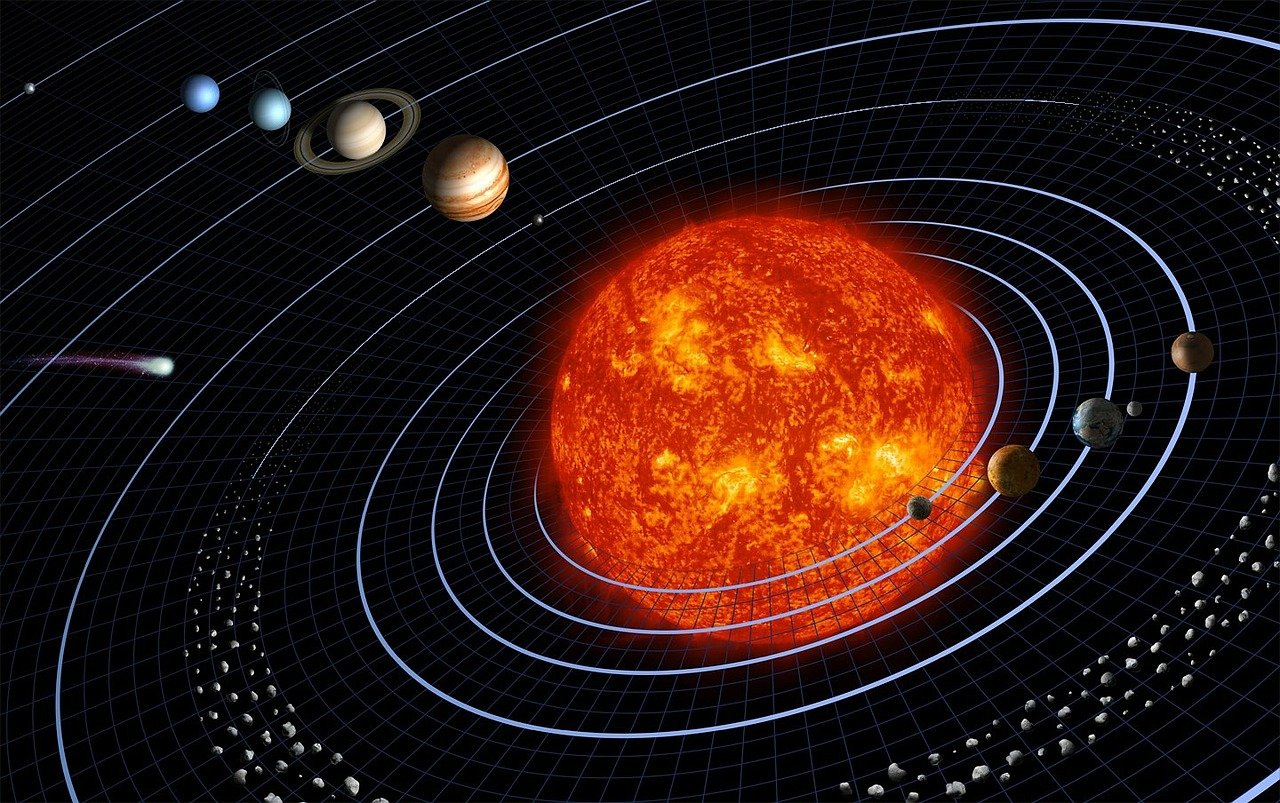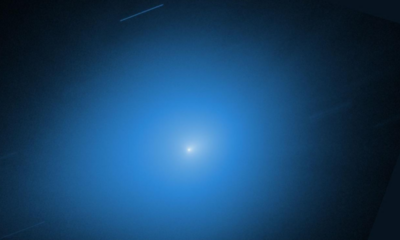Science
NASA Classifies 3I/ATLAS as Comet, Avi Loeb Disputes Findings

The National Aeronautics and Space Administration (NASA) has officially classified the interstellar object known as 3I/ATLAS as a comet, based on spectral data indicating typical icy and dusty characteristics. This classification is coming under scrutiny from Harvard physicist Avi Loeb, who argues that peculiar aspects of the object’s trajectory suggest it may not be a natural phenomenon.
NASA’s analysis highlights classic comet features, including a visible coma, a tail emitting gas, and spectral data showing water activity. These indicators lead the agency to conclude that 3I/ATLAS fits the profile of a typical comet, leaving little room for interpretations involving alien technology. Observations from multiple observatories bolster this view, revealing dust and gas consistent with cometary behavior. Among the findings, carbon dioxide comprises a significant portion of the material surrounding the object, reinforcing NASA’s stance that while 3I/ATLAS is unusual, it remains a natural celestial entity.
Despite the agency’s official designation, Avi Loeb maintains that 3I/ATLAS exhibits anomalies that cannot be easily explained by conventional cometary physics. He recently identified what he refers to as the 13th anomaly, which he believes indicates intentional navigation rather than random chance. Loeb points to the object’s trajectory, which closely aligns with Jupiter’s gravitational influence, as a key factor in his argument.
Loeb’s Analysis of 3I/ATLAS
The professor’s analysis reveals that 3I/ATLAS is on a path that nearly grazes the edge of Jupiter’s Hill sphere, the zone where Jupiter’s gravity overcomes that of the Sun. He notes that the closest approach of approximately 53.445 million kilometers coincides almost perfectly with this critical boundary, an alignment he deems statistically improbable without some form of intervention.
In his latest blog post on Medium, Loeb discusses the object’s unexpected behavior, including non-gravitational acceleration and atypical jet activity. He suggests that if 3I/ATLAS utilized jets similar to thrusters, it could have maneuvered its trajectory deliberately. This leads to a bold hypothesis that the object could function as a ‘mothership,’ potentially deploying smaller crafts into stable orbits around Jupiter’s Lagrange points, which are optimal for long-term observation.
Loeb emphasizes that if 3I/ATLAS is technological in origin, it could have adjusted its course for a flyby of Jupiter, leveraging gravitational assists from the Sun at the optimal moment—around perihelion. He speculates that if the object were to release devices within Jupiter’s Hill sphere on March 16, 2026, these devices would need to employ their engines to counteract the high speed of 3I/ATLAS, which is approximately 65.9 kilometers per second relative to Jupiter.
Implications of Loeb’s Theories
While Loeb does not assert that 3I/ATLAS is definitively alien technology, he argues that the evidence warrants a thorough investigation. He cautions against dismissing the unusual data in favor of more comfortable explanations. “If we find technological satellites of Jupiter that we did not send, it would imply that Jupiter is of interest to an extraterrestrial civilization,” he stated.
Loeb highlights the importance of remaining open-minded about the nature of 3I/ATLAS. He notes that the absence of similar devices near Earth could indicate a lack of interest from extraterrestrial entities in our planet, contrasting with the intriguing possibility presented by the interstellar visitor.
As the debate continues, NASA stands by its classification of 3I/ATLAS as a comet. The discussions surrounding this object reflect broader questions about our understanding of celestial phenomena and the potential for discovering signs of intelligent life beyond Earth. The ongoing analysis from both NASA and independent researchers like Loeb will likely shape our understanding of not only 3I/ATLAS but also the universe at large.
-

 World2 weeks ago
World2 weeks agoCoronation Street’s Shocking Murder Twist Reveals Family Secrets
-

 Entertainment1 week ago
Entertainment1 week agoAndrew Pierce Confirms Departure from ITV’s Good Morning Britain
-

 Entertainment5 months ago
Entertainment5 months agoKate Garraway Sells £2 Million Home Amid Financial Struggles
-

 Entertainment4 months ago
Entertainment4 months agoAnn Ming Reflects on ITV’s ‘I Fought the Law’ Drama
-

 Entertainment1 month ago
Entertainment1 month agoCoronation Street Fans React as Todd Faces Heartbreaking Choice
-

 Health4 months ago
Health4 months agoKatie Price Faces New Health Concerns After Cancer Symptoms Resurface
-

 World1 month ago
World1 month agoBailey Announces Heartbreaking Split from Rebecca After Reunion
-

 Entertainment2 weeks ago
Entertainment2 weeks agoTwo Stars Evicted from I’m A Celebrity Just Days Before Finale
-

 World2 weeks ago
World2 weeks agoKevin Sinfield Exceeds Fundraising Goal Ahead of Final Marathons
-

 Entertainment4 months ago
Entertainment4 months agoCoronation Street’s Carl Webster Faces Trouble with New Affairs
-

 Entertainment4 months ago
Entertainment4 months agoWhere is Tinder Swindler Simon Leviev? Latest Updates Revealed
-

 Entertainment5 months ago
Entertainment5 months agoMarkiplier Addresses AI Controversy During Livestream Response





















